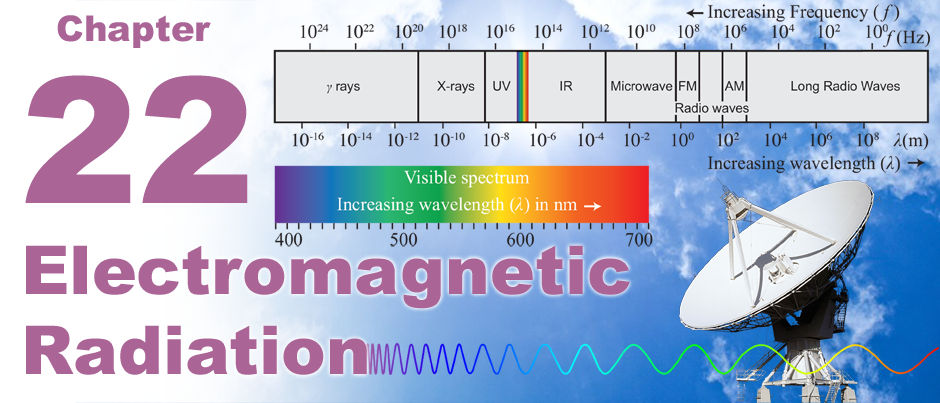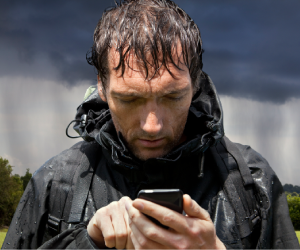 |
Few technologies have woven themselves so deeply into our daily routine as the mobile phone. In 1975 a mobile phone was a 2 lb (1 kg) “brick.” Today, cellphones are smaller and lighter than most wallets and more powerful than a room-sized mainframe computer from 1975. Smartphones enable billions of people to communicate and also to access the Internet, watch movies, take pictures, play music, study, and even navigate! Cellphones receive and transmit data using electromagnetic waves, similar to the waves that heat food in a microwave oven. 
|
Electromagnetic waves are a form of radiation, which in physics simply means the movement of energy through space. The most familiar electromagnetic (EM) radiation is visible light. Visible light includes a range of energy that is too low to break chemical bonds but high enough to stimulate rhodopsin molecules in your retina to send signals to your brain. 
|
Electromagnetic radiation is pure energy in the form of oscillations of the electromagnetic field traveling through space at the enormous velocity of 300,000 km/s. The electromagnetic spectrum comprises waves with energies both higher and lower than visible light. Radio waves, microwaves, and infrared radiation have lower energy than visible light, while x-rays and gamma rays have higher energy. 
|
 Have you ever noticed that cellphone reception gets noticeably worse when it rains or is foggy? That is because different substances are transparent to different energies of EM radiation. For example, x-rays pass readily through animal tissue, but they are absorbed by bone. The microwaves used by cellphone transmissions easily pass through dry air but, like the microwaves in an oven, they are absorbed by water. A small but significant percentage of the microwave signal from a cellphone is absorbed or scattered by atmospheric water vapor, and that explains the poor reception.
Have you ever noticed that cellphone reception gets noticeably worse when it rains or is foggy? That is because different substances are transparent to different energies of EM radiation. For example, x-rays pass readily through animal tissue, but they are absorbed by bone. The microwaves used by cellphone transmissions easily pass through dry air but, like the microwaves in an oven, they are absorbed by water. A small but significant percentage of the microwave signal from a cellphone is absorbed or scattered by atmospheric water vapor, and that explains the poor reception. 
|
Although rain hinders communications, the variations in microwave signal strength can be useful in constructing detailed, real-time weather maps. One research team recently used data from 2,500 microwave ground stations in the Netherlands to track individual rainstorms as they moved across the country. These maps made from cellphone signal strength can be constructed more frequently and with better resolution than many traditional weather maps. 
|
| |
|

